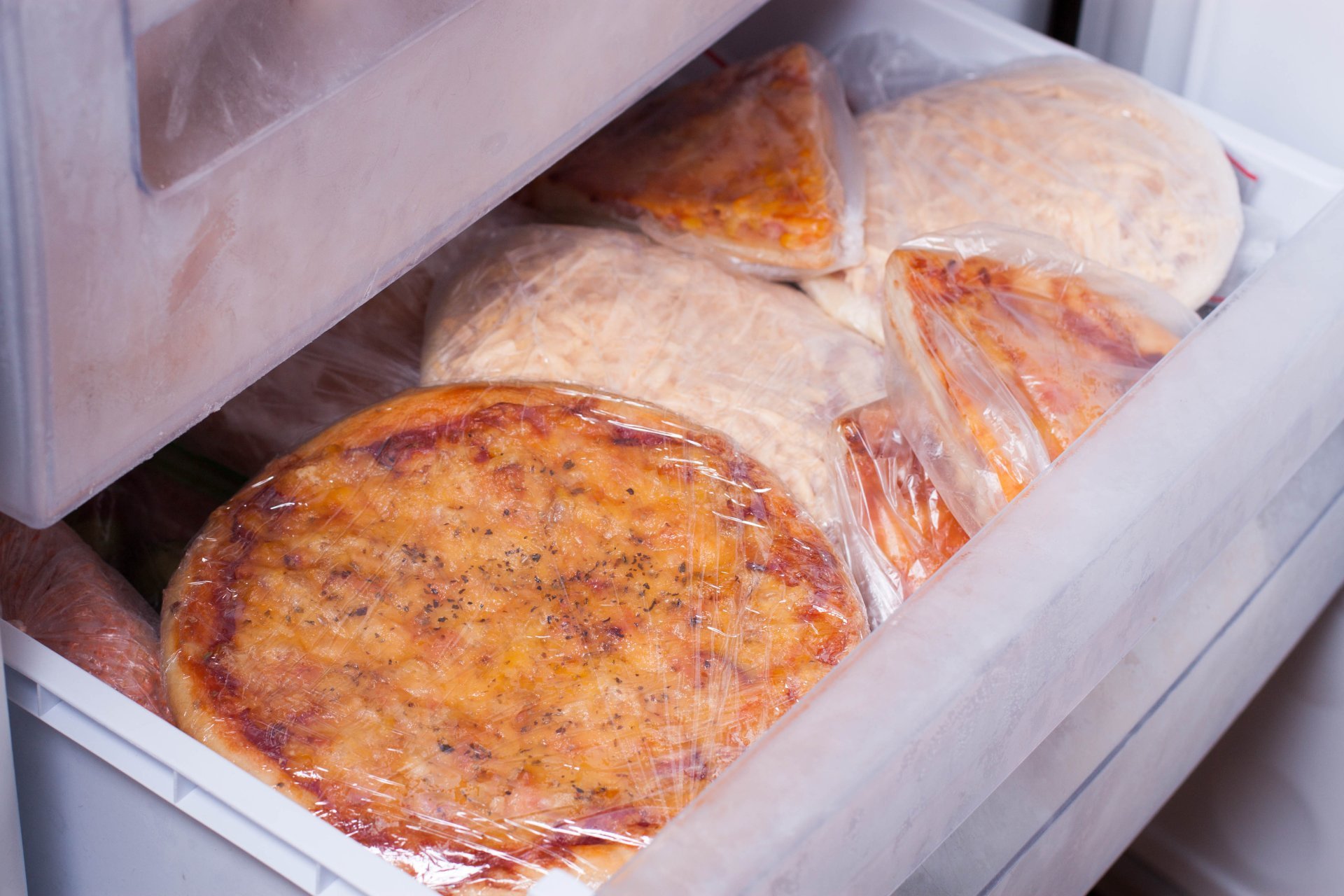

Articles
How Long Do Pizzas Last In The Freezer
Modified: August 25, 2024
Discover how long pizzas can last in the freezer with our informative articles. Find out the best storage tips and guidelines for keeping your pizzas fresh and delicious.
(Many of the links in this article redirect to a specific reviewed product. Your purchase of these products through affiliate links helps to generate commission for Storables.com, at no extra cost. Learn more)
Introduction
When it comes to pizza, it’s always a good idea to have some in the freezer for those lazy nights or when unexpected guests pop by. But how long can you actually keep pizzas in the freezer before they start losing their delicious taste and texture? In this article, we will explore the factors that affect the shelf life of pizzas in the freezer and provide you with tips on how to store them properly for extended freshness.
Pizzas are a versatile and convenient food choice that can be enjoyed by people of all ages. Whether you prefer a classic cheese and pepperoni combination or are a fan of gourmet toppings, having a stash of frozen pizzas can be a lifesaver. However, it’s important to understand that the quality of the pizza can diminish over time if not stored correctly.
The shelf life of frozen pizzas can vary depending on several factors. Firstly, the ingredients used in the pizza play a significant role in determining its freezer life. Fresh toppings like vegetables and meats tend to have a shorter shelf life compared to processed or pre-cooked ingredients. Additionally, the type of crust and sauce used can also impact the pizza’s longevity in the freezer.
Another important factor to consider is the recommended storage conditions for frozen pizzas. Storing pizzas at the optimal temperature and humidity levels can help preserve their quality for a longer period. Exposure to air and moisture can lead to freezer burn, which can negatively affect the taste and texture of the pizza.
In the next sections, we will delve deeper into the recommended storage conditions for frozen pizzas and provide you with step-by-step instructions on how to properly freeze and thaw pizzas. We will also discuss the signs of spoiled pizza and provide you with additional tips to extend the freezer life of your favorite pizzas. So let’s get started and make sure your freezer is ready to handle all your pizza cravings!
Key Takeaways:
- Properly packaging, storing at recommended temperature, and thawing correctly can extend frozen pizza shelf life. Trust your senses to identify spoiled pizza and prioritize food safety.
- Use high-quality packaging, label and date pizzas, and maintain consistent freezer temperature to maximize frozen pizza freshness. Enjoy delicious pizzas with proper storage and care.
Read more: How Long Do Pizza Rolls Last In The Freezer
Factors Affecting Pizza Shelf Life in the Freezer
Several factors can affect the shelf life of pizzas stored in the freezer. Understanding these factors will help you make informed decisions about how long to keep your frozen pizzas and how to maintain their quality for as long as possible.
1. Ingredients: The quality and freshness of the ingredients used in the pizza directly affect its freezer life. Fresh toppings like vegetables and meats have a shorter shelf life compared to processed or pre-cooked ingredients. It is recommended to use ingredients that are specifically designed for freezing, as they are more resistant to freezer burn and degradation.
2. Crust Type: The type of crust can also impact the pizza’s shelf life in the freezer. Thin crust pizzas tend to freezer burn more quickly than thicker crusts. Thicker crusts provide a protective layer that helps preserve the pizza’s texture and flavor.
3. Sauce: The type and quality of the sauce used in the pizza can also affect its freezer life. Tomato-based sauces with preservatives tend to freeze well and maintain their flavor, while cream-based sauces may separate or become watery when frozen and thawed.
4. Packaging: The way the pizza is packaged before freezing can significantly impact its shelf life. Make sure to wrap the pizza tightly in plastic wrap or aluminum foil to prevent air and moisture from getting in. Alternatively, you can use airtight freezer bags or containers to protect the pizza from freezer burn.
5. Temperature and Humidity: The storage temperature and humidity levels in your freezer are crucial for maintaining the quality of the pizza. It is recommended to keep the freezer temperature at or below 0°F (-18°C) to prevent the growth of bacteria and food spoilage. Excess moisture can lead to freezer burn, so it’s important to ensure a dry environment within the freezer.
By taking these factors into consideration, you can maximize the shelf life of your frozen pizzas and ensure that they maintain their taste and texture for as long as possible. In the next section, we will discuss the recommended storage conditions for frozen pizzas to help you keep them at their best.
Recommended Storage Conditions
To maintain the quality and flavor of your frozen pizzas, it is essential to store them under the right conditions. By following these recommended storage guidelines, you can ensure that your pizzas stay fresh and delicious for an extended period:
1. Temperature: Keep your freezer at or below 0°F (-18°C). Freezing the pizzas at this temperature inhibits the growth of bacteria and prevents food spoilage. It also helps to preserve the texture and taste of the pizza.
2. Packaging: Proper packaging is crucial for preserving the quality of frozen pizzas. Wrap each pizza individually in plastic wrap or aluminum foil to prevent air and moisture from getting in. You can also use airtight freezer bags or containers.
3. Air Tightness: Ensure that the packaging is airtight to prevent freezer burn. Freezer burn occurs when the pizza is exposed to air, causing moisture loss and affecting the taste and texture. Double-check for any gaps or openings in the packaging before placing the pizzas in the freezer.
4. Placement: Arrange the pizzas in a single layer on a flat surface, such as a baking tray or cutting board, before putting them in the freezer. This allows for even freezing and helps prevent the toppings from shifting or becoming misshapen. Once they are frozen solid, you can stack them to save space.
5. Freezer Organization: Proper organization in the freezer can make a significant difference in maintaining the quality of your frozen pizzas. Place the pizzas away from the freezer door and in a spot where they won’t be frequently disturbed. This helps to maintain a consistent temperature and minimize temperature fluctuations.
6. Labeling: Lastly, don’t forget to label each wrapped pizza with the date of freezing. This will help you keep track of how long they have been stored in the freezer. Use a permanent marker or freezer-safe labels to ensure the information stays intact.
By adhering to these recommended storage conditions, you can ensure that your frozen pizzas retain their taste, texture, and overall quality for an extended period. In the next section, we will dive into the step-by-step process of freezing pizzas properly to maximize their shelf life.
How to Freeze Pizza Properly
Freezing pizza properly is essential to maintain its taste, texture, and quality. Follow these step-by-step instructions to ensure your pizzas stay fresh and delicious in the freezer:
1. Preparing the Pizza: If you have a freshly baked pizza that you want to freeze, allow it to cool completely. This prevents condensation from forming inside the packaging. If you have store-bought frozen pizzas, you can skip this step.
2. Wrapping the Pizza: Wrap each pizza tightly in plastic wrap or aluminum foil. Make sure to cover the entire pizza, including the crust and toppings, to prevent air and moisture from reaching the pizza. This will help protect the pizza from freezer burn.
3. Double Wrapping (Optional): For added protection, you can double wrap the pizza by placing the wrapped pizza in a freezer bag or airtight container. This extra layer of packaging further reduces the risk of freezer burn and helps prevent any odors from seeping into the pizza.
4. Labeling and Dating: Use a permanent marker or freezer-safe label to write the date of freezing on each wrapped pizza. This will help you keep track of how long they have been stored in the freezer and ensure you consume them within a reasonable timeframe.
5. Freezing the Pizza: Place the wrapped and labeled pizzas in the freezer. Ideally, they should be placed in a single layer on a flat surface, such as a baking tray or cutting board, initially to allow for even freezing. Once they are frozen solid, you can stack them to save space in the freezer.
Remember, introducing warm or hot pizza directly into the freezer can increase the risk of condensation, which can lead to ice formation and affect the quality of the pizza. Ensure that the pizza has cooled to room temperature before wrapping and freezing.
By following these steps, you can freeze pizzas properly and preserve their taste and texture for an extended period. In the next section, we will discuss the thawing process to ensure you enjoy your frozen pizzas to the fullest.
To maximize the shelf life of pizzas in the freezer, wrap them tightly in plastic wrap or aluminum foil to prevent freezer burn. Additionally, consider labeling the pizzas with the date they were frozen to keep track of their freshness.
Thawing Frozen Pizza
When it’s time to enjoy your frozen pizza, it’s important to thaw it properly to ensure it retains its original taste and texture. Here’s how to thaw frozen pizza safely and efficiently:
1. Planning Ahead: Take the frozen pizza out of the freezer and transfer it to the refrigerator the night before you plan to eat it. This gradual thawing process allows the pizza to thaw slowly and evenly, reducing the risk of moisture loss and maintaining its quality.
2. Refrigerator Thawing: Place the wrapped pizza on a plate or baking sheet to catch any condensation that may occur during thawing. This prevents the pizza from sitting in excess moisture, which can make the crust soggy. Let the pizza thaw in the refrigerator for at least 12 to 24 hours, depending on its size and thickness.
3. Room Temperature Thawing (Quick Thawing): In case you forgot to thaw the pizza in advance, you can use the quick thawing method. Keep the pizza wrapped and leave it out at room temperature for about 1-2 hours. However, please note that this method should only be used if you plan to cook the pizza immediately after thawing, as it can increase the risk of bacterial growth.
4. Microwaving (Partial Thawing): If you’re in a hurry or need to thaw a small portion of the pizza quickly, you can use a microwave. Remove any plastic wrap or aluminum foil and place the pizza on a microwave-safe plate. Use the defrost setting at a low power level and microwave in short intervals, turning the pizza occasionally to ensure even thawing. This method may result in slight sogginess, so it’s recommended to cook the pizza immediately after thawing.
5. Cook from Frozen: Alternatively, some frozen pizzas can be cooked directly from frozen, without the need for thawing. Follow the instructions provided by the manufacturer on the packaging to determine if this option is suitable for the specific pizza you have.
Remember, never thaw and refreeze the pizza once it has been fully thawed. This can lead to bacterial growth and compromise food safety. Instead, if you thawed more pizza than you intend to eat, it’s best to cook the remaining portion and store it in the refrigerator for up to 3-4 days.
By following these thawing methods, you can ensure that your frozen pizza is thawed properly and ready to be cooked and enjoyed. In the next section, we will discuss the signs of spoiled pizza in case you are unsure about the quality of your frozen pizza.
Signs of Spoiled Pizza
While freezing can help extend the shelf life of your pizzas, it’s essential to be aware of the signs of spoiled pizza. Here are some indicators that your frozen pizza may have gone bad:
1. Foul Odor: If the pizza emits a strong, unpleasant odor, it is a clear indication that it has spoiled. Moldy or rancid smells are signs of bacterial growth and decomposition. Trust your sense of smell; if something doesn’t seem right, it’s best to discard the pizza.
2. Strange Appearance: Inspect the pizza visually. If you notice any visible signs of mold, discoloration, or sliminess on the crust, toppings, or sauce, it is a clear sign of spoilage. Discoloration can indicate the presence of bacteria or fungal growth.
3. Texture Changes: If the pizza crust becomes excessively soft, mushy, or has an unusual texture, it may indicate spoilage. Additionally, if the toppings appear discolored or have a slimy texture, it’s best to err on the side of caution and discard the pizza.
4. Tastes Off: Taste a small sample of the pizza. If it has an off-flavor, a sour or bitter taste, or a strange aftertaste, it is likely spoiled. Trust your taste buds and don’t consume the pizza if it doesn’t taste as it should.
5. Freezer Burn: Freezer burn can occur when food is improperly stored, leading to dehydration and the formation of ice crystals. While freezer burn doesn’t necessarily render the pizza unsafe to eat, it can adversely affect the taste and texture. If the pizza shows extensive signs of freezer burn, it’s best to discard it.
It’s important to note that consuming spoiled or unsafe food can lead to foodborne illness. If you are unsure about the quality or safety of your frozen pizza, it’s best to err on the side of caution and discard it. Remember, it’s always better to be safe than sorry.
By keeping an eye out for these signs of spoilage, you can ensure that you and your family enjoy safe and delicious frozen pizzas. In the next section, we will share some tips to help extend the freezer life of your pizzas and ensure they stay fresh for longer.
Tips for Extending Pizza Freezer Life
Want to make sure your frozen pizzas stay fresh and delicious for as long as possible? Follow these simple tips to extend the freezer life of your pizzas:
1. Use High-Quality Packaging: Invest in high-quality freezer-safe plastic wrap, aluminum foil, or freezer bags to properly wrap your pizzas. Ensure that the packaging is airtight and free of any gaps or openings to prevent air and moisture from reaching the pizza.
2. Remove Excess Air: When wrapping the pizza, press out as much air as possible from the packaging. Excess air can cause moisture buildup and increase the risk of freezer burn. Squeezing out the air will help preserve the texture and taste of the pizza.
3. Label and Date: Always label each wrapped pizza with the date of freezing. This will help you keep track of how long they have been stored in the freezer and ensure you consume them within a reasonable timeframe. Use a permanent marker or freezer-safe labels to ensure the information stays intact.
4. Store Properly: Place the wrapped pizzas in a single layer on a flat surface, such as a baking tray or cutting board, initially to allow for even freezing. Once they are frozen solid, you can stack them to save space in the freezer. Remember to keep the pizzas away from the freezer door to avoid temperature fluctuations.
5. Rotate Your Stock: Practice the “first in, first out” method by ensuring that the oldest pizzas are placed to the front or top of the freezer. By using the oldest pizzas first, you prevent them from being forgotten or left in the freezer for too long.
6. Avoid Frequent Thawing-and-Freezing: Thawing and refreezing pizzas repeatedly can degrade the quality and taste of the pizza. It’s best to thaw only the portion you plan to consume and avoid thawing-and-refreezing cycles whenever possible.
7. Maintain Consistent Freezer Temperature: Ensure that your freezer is set to the recommended temperature of 0°F (-18°C) or below. Fluctuations in temperature can affect the quality of the pizza and lead to freezer burn. Regularly check the freezer temperature to ensure it remains consistent.
By following these tips, you can maximize the shelf life of your frozen pizzas and enjoy them at their freshest. Remember to always trust your senses and discard any pizzas that show signs of spoilage. With proper storage and care, your freezer can become a pizza paradise, ready to satisfy your cravings at any time.
Conclusion
Frozen pizzas are a convenient and delicious option to have on hand for quick meals or unexpected cravings. By understanding the factors that affect pizza shelf life in the freezer and following the recommended storage conditions, you can ensure that your pizzas stay fresh and tasty for an extended period.
Properly packaging your pizzas, storing them at the recommended freezer temperature, and organizing your freezer space can help prevent freezer burn and maintain the quality of the pizza. Furthermore, thawing frozen pizzas correctly, whether in the refrigerator or using other methods, ensures that they retain their original taste and texture.
It’s important to be aware of the signs of spoiled pizza, such as foul odor, strange appearance, texture changes, and off-flavor. Trust your senses and discard any pizza that shows signs of spoilage to avoid potential foodborne illnesses.
By following the tips provided in this article, you can extend the freezer life of your pizzas and enjoy them at their best. Using high-quality packaging, labeling and dating the pizzas, and practicing proper storage techniques can help you maintain a stock of delicious frozen pizzas ready to satisfy your cravings.
Remember, it’s always important to prioritize food safety and trust your judgment. When in doubt, it’s better to err on the side of caution and discard any questionable or expired pizzas.
Now that you have the knowledge and tips to keep your frozen pizzas fresh, go ahead and stock up your freezer with your favorite flavors. With the right storage conditions and a little planning, you can enjoy mouthwatering pizzas whenever the craving strikes!
Frequently Asked Questions about How Long Do Pizzas Last In The Freezer
Was this page helpful?
At Storables.com, we guarantee accurate and reliable information. Our content, validated by Expert Board Contributors, is crafted following stringent Editorial Policies. We're committed to providing you with well-researched, expert-backed insights for all your informational needs.
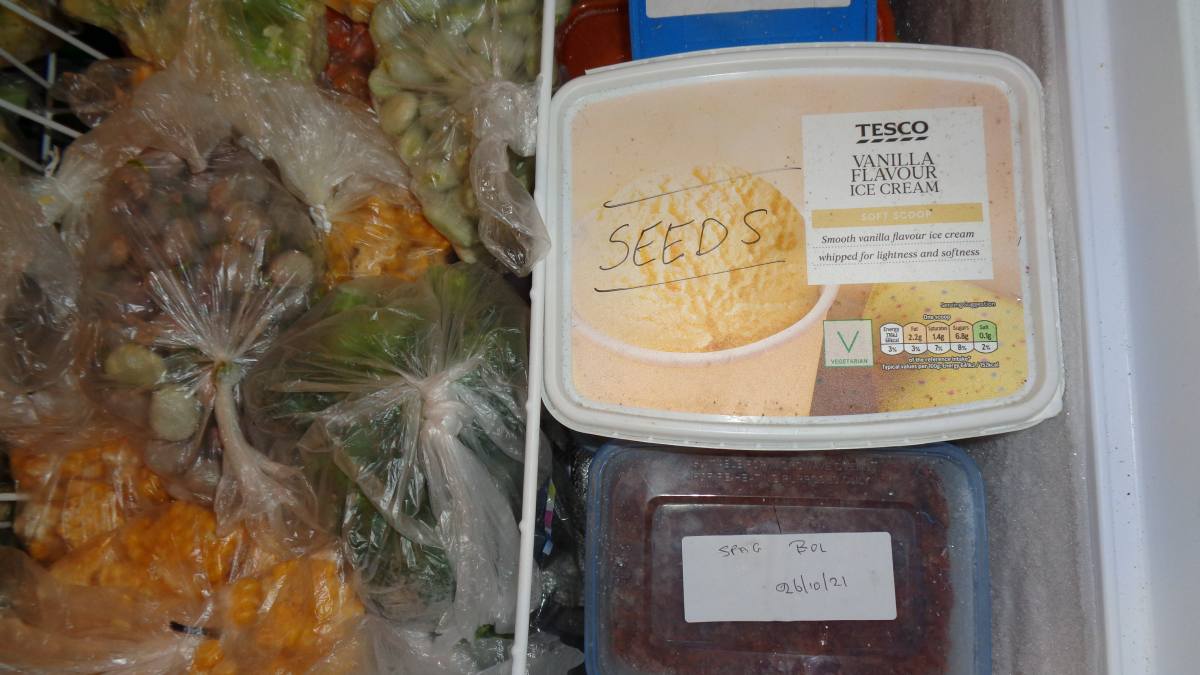
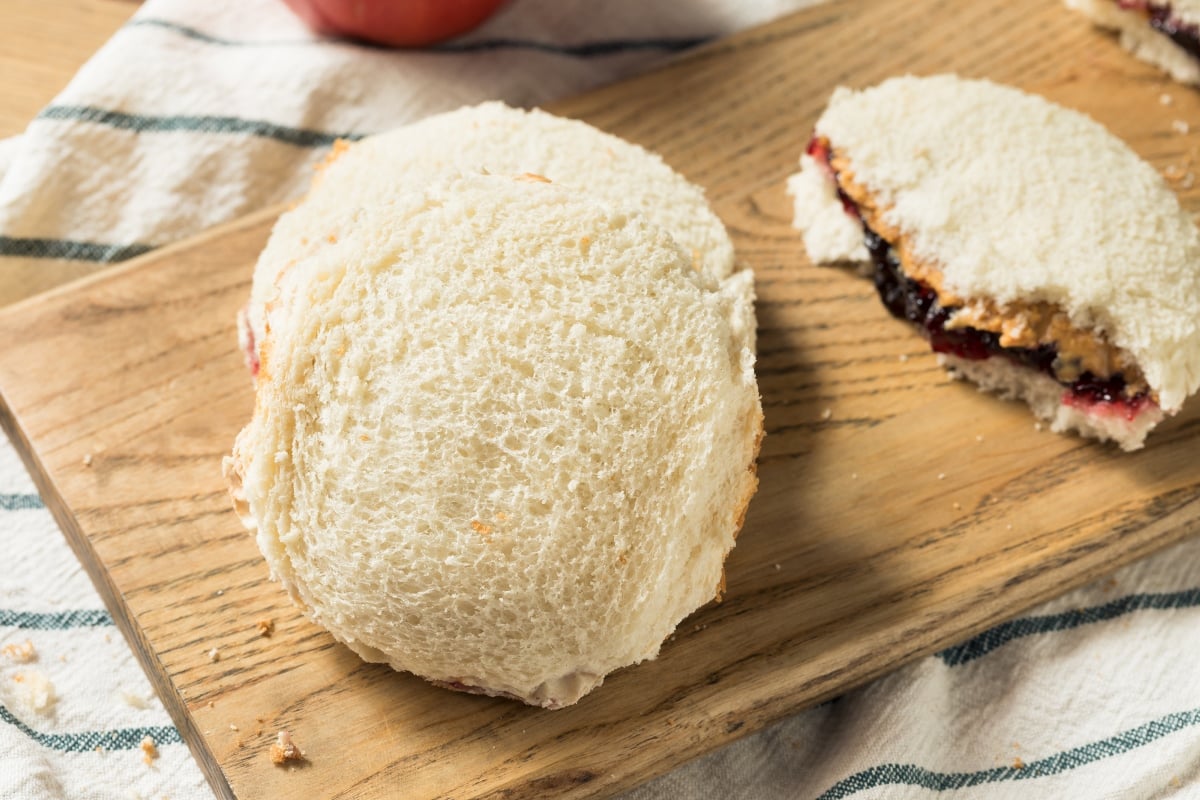
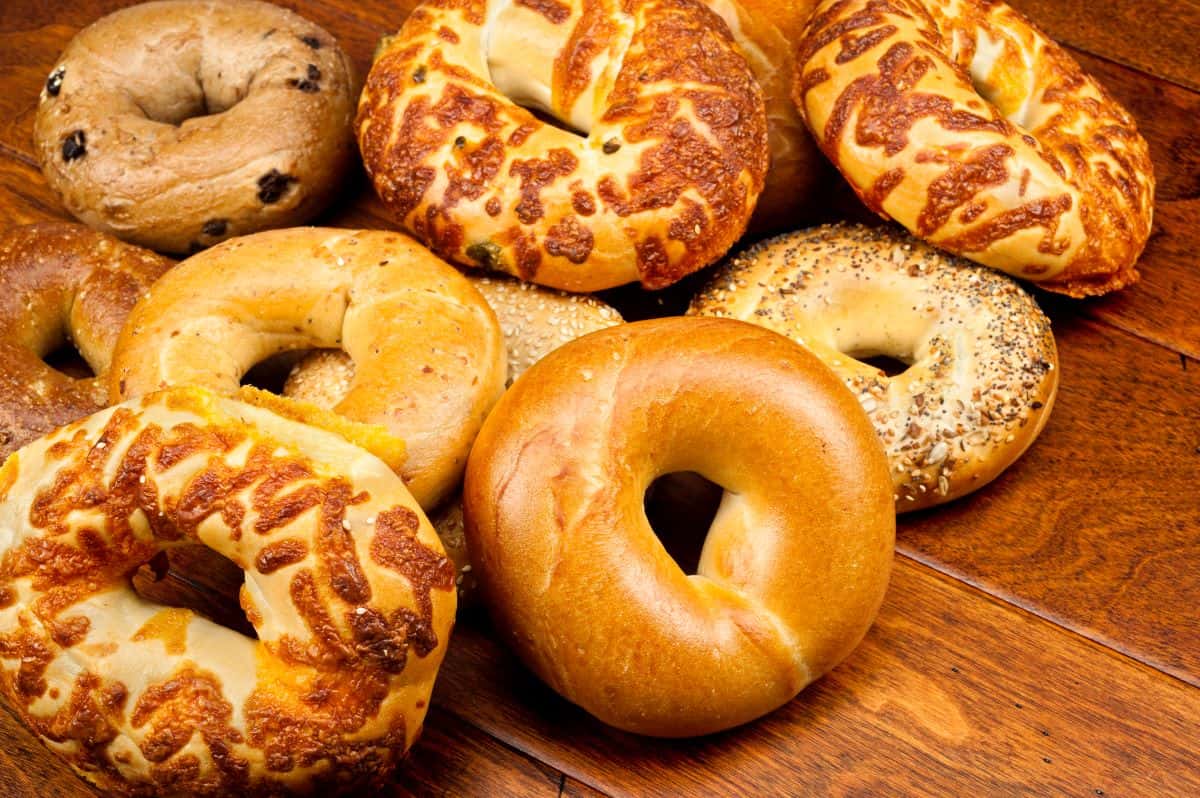


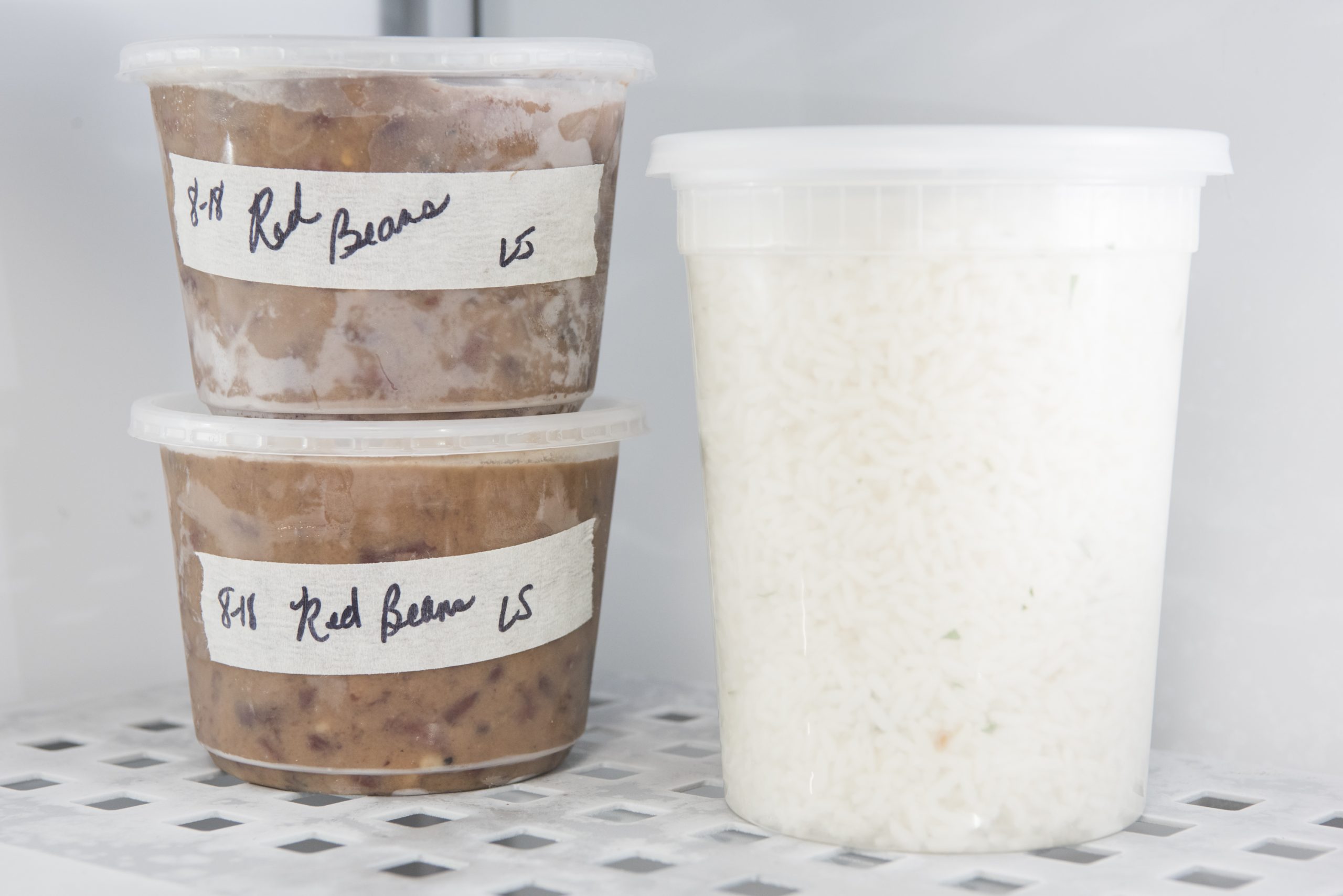



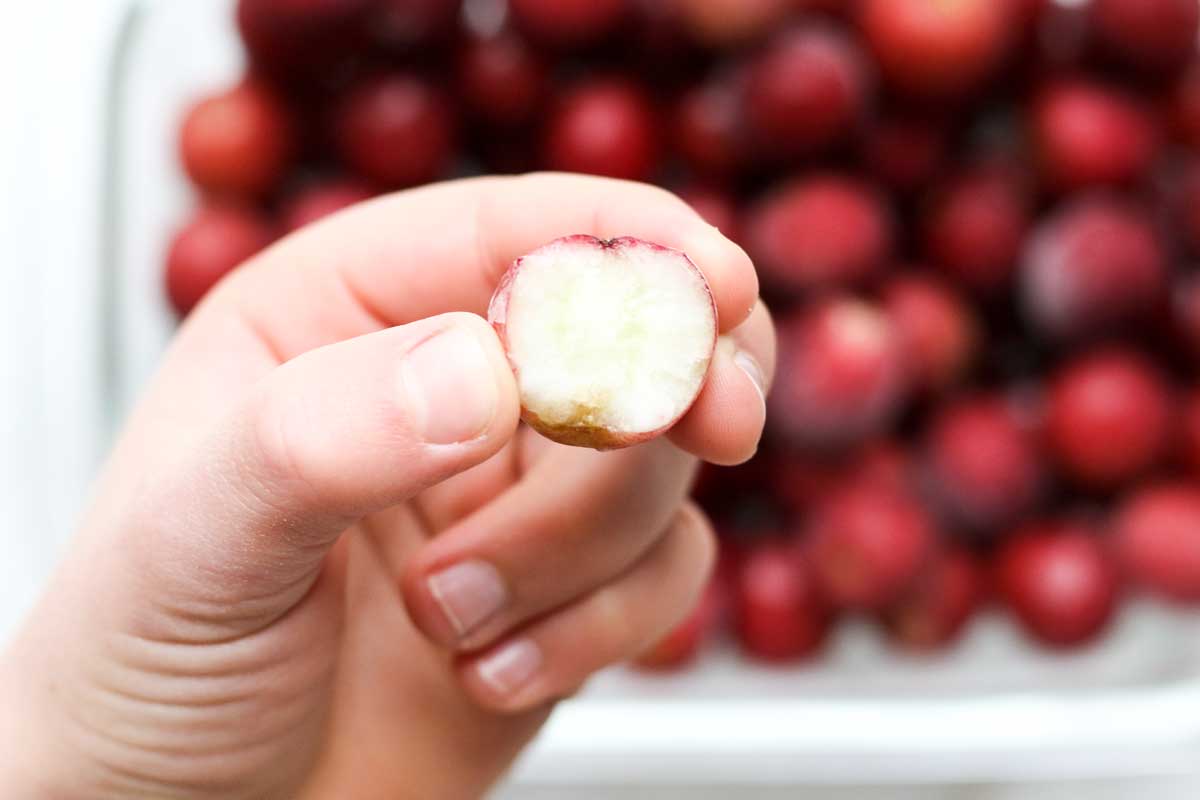
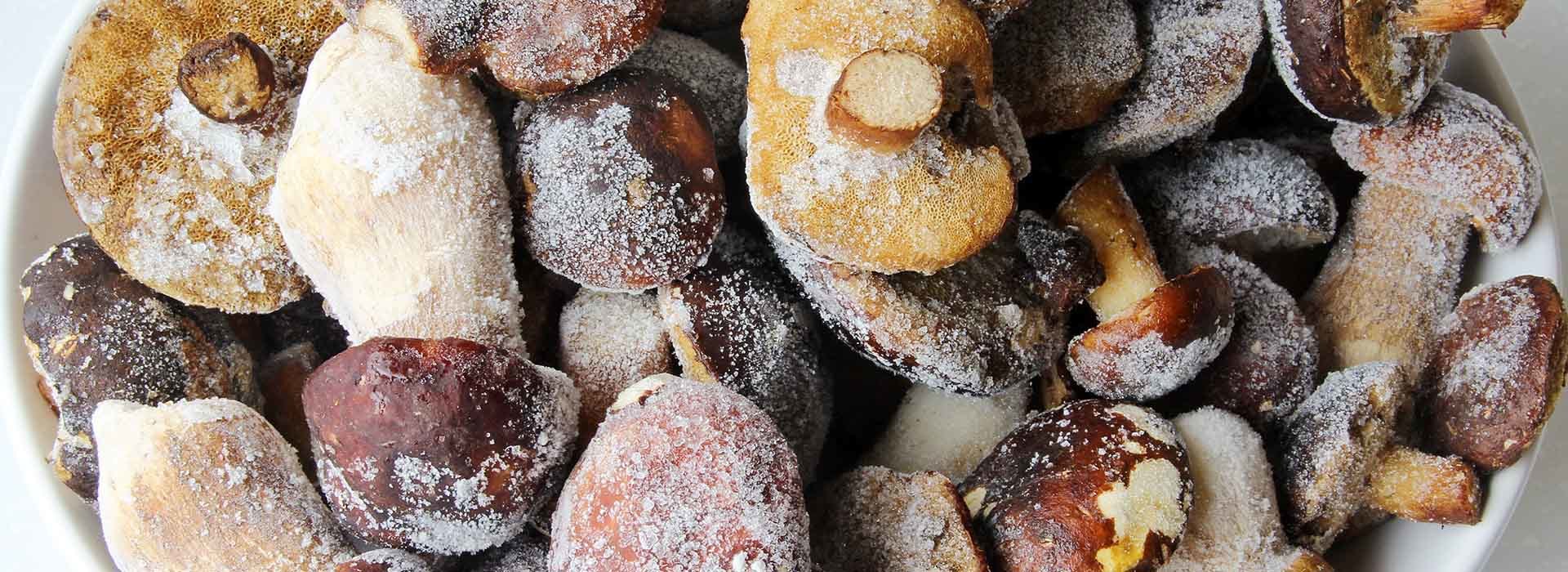

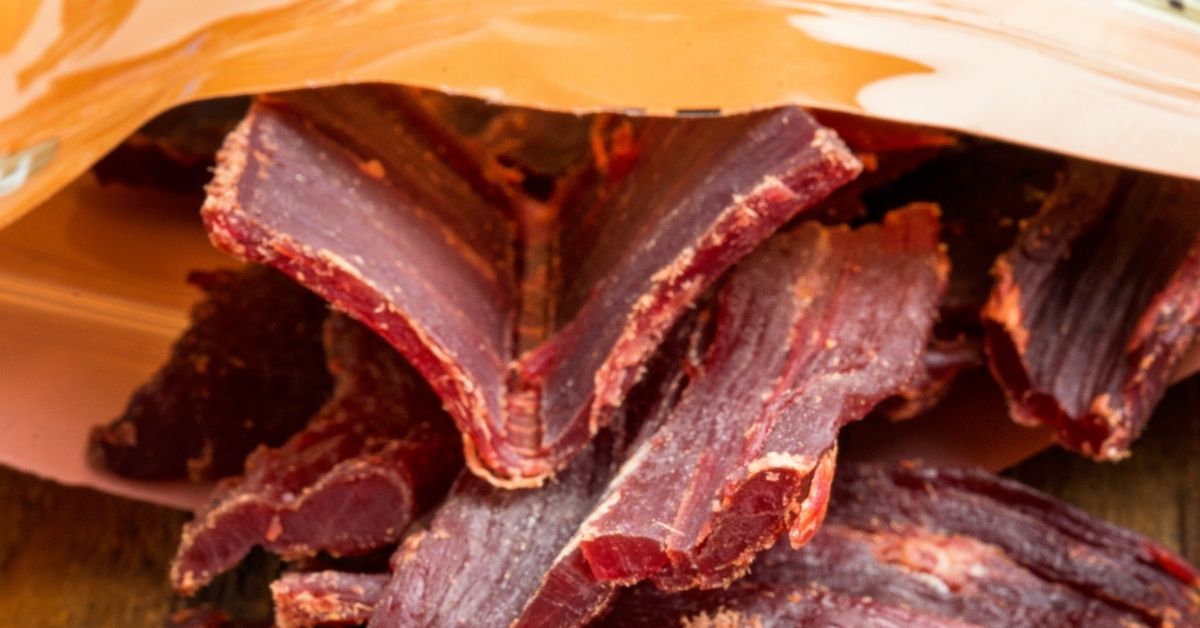
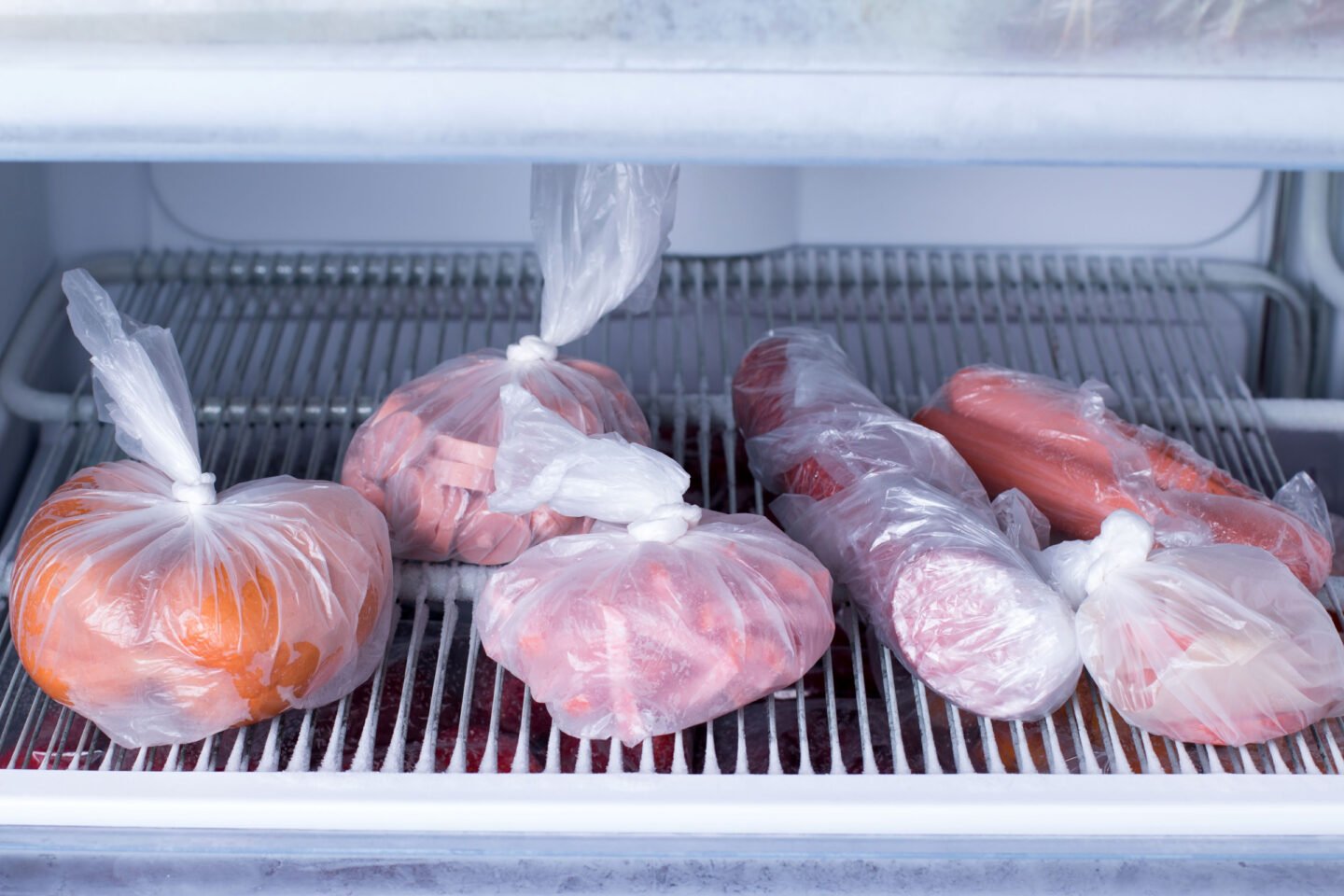

0 thoughts on “How Long Do Pizzas Last In The Freezer”